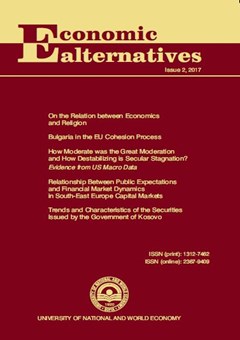How Moderate was the Great Moderation and how Destabilizing is Secular Stagnation? Fiscal and monetary policy implications based on еvidence from US macro data
Author: Hicham M. Hachem
Abstract
This paper aims to challenge the mainstream view that the path towards full employment, optimal and sustained growth is necessarily a stable and steady balanced growth path. Mainstream explanations of the great moderation and explanations about the secular stagnation hypothesis are grounded on a historical analysis of aggregate data of growth rates and output gaps. They often serve to justify fiscal and monetary policies that aim at reducing output fluctuations, targeting low inflation rates and achieving stable sustained growth. Such policy recommendations assume that sustained growth is a balanced equilibrium path, so that countercyclical measures are considered desirable. To put this theory to the test, this paper seeks to study the dynamics of market clearing and its stability. Instead of looking at aggregate data of growth rates and output gaps, data of private sector value added and of personal consumption are studied using nonlinear methods to estimate fluctuation phases. Unlike standard explanations, results show evidence of market instability during the great moderation. For the period of secular stagnation results indicate that markets are cleared and stable. Contrary to mainstream literature on policy recommendations, such findings imply that sustained growth is associated with unstable and volatile markets and that during stagnation, markets clear and their dynamics are stable. If so, countercyclical measures might not be desirable. Mainstream monetary and fiscal policy recommendations may require fundamental revisions.

